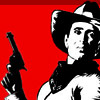Iray photo/image emits light?
 mmitchell_houston
Posts: 2,490
mmitchell_houston
Posts: 2,490
I have been messing with this for about an hour, and for some reason I cannot even find a good tutorial on how to do this. I would like to have a mesh light source in Iray emit light, but still see the image. Specifically, I want to create a large plane and put an image on it and then have it glow. Where the image is white I want white light to be admitted, where it is blue I want blue light to be admitted, and so on. Picture lighting a room specifically, I want to create a large playing and put in image on it and then have if glow. Where the image is quite a want white light to be admitted, we're it is blue eye want to blue light to be admitted, and so on. Picture lighting a room with a flat panel TV set, or something like that.
Can someone point me in the right direction?
Post edited by mmitchell_houston on


Comments
This thread might help.
http://www.daz3d.com/forums/discussion/comment/877156/#Comment_877156
The link Sandy provides is a good one for the general technique. In sum, you want to:
1. Apply the Emissive shader to the surface. Don't just activate thje Emission Color to turn it into an emissive surface. This often leaves other channel settings in place that can interfere with good rendering. Applying the Emissive shader will reset everything.
2. Turn the Color Temperature to 0. This allows the color of the light to be what you set in Emission Color, rather than a mathematical combination of Emission Color and the Color Temperature.
3. Put the texture you want for the image into the Emission Color channel.
4. Change the Luminance Units to cd/cm^2 (candles per centimeter square). This allows you to change the size of the object and still maintain the same brightness of the surface (Don't use Lumens or Watts; these will cause the brightness of the surface to change when you resize the object.) FWIW, the cd/cm^2 setting is simply a handy one because the centimeter is D|S default unit for all lighting.
5. Finally, dial the Luminosity for the output you want. Keep it fairly low -- maybe try values starting at about 20. Too bright and you'll blow out the color and the image.
TOBOR: Thank you SO much. I had the color temp and the brightness set waaaaaay too high. Your tips were exactly what I needed to solve my problem.
Thanks!
Now that I didn't know, thanks Tobor. I always set the colour to 6500K.
That could explain why sometimes things look washed out/too bright...
I got it to work (thanks very much for the tips). But wasn't too sure about how much light was actually being emitted.
Is using the image as an emitter the best way to go, or should is it better to try to make the image into a type of gel in front of another light source? Not even sure how I would go about that, to be honest, but it was something that just crossed my mind.
Maybe I just need to play around with the original technique more before trying something like the gel idea.
I'd say for things like TV/monitor screens an image is probably the best.
Yeah exactly but to be honest I haven't had that issue as I just dropped the Lumen count. ;) Now I shouldn't have to thanks to Tobor.